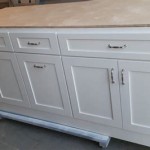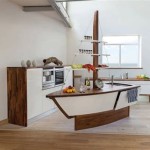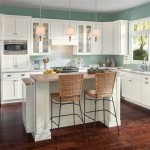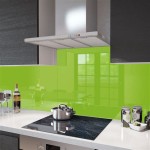How To Choose The Right Size Handles For Kitchen Cabinets
Selecting the appropriate size handles for kitchen cabinets is a crucial aspect of kitchen design. Handles contribute significantly to both the aesthetic appeal and the functional usability of the space. The wrong size can lead to a visually unbalanced kitchen or, more practically, difficulty opening cabinets and drawers. Various factors influence the ideal handle size, including the size of the cabinet or drawer, the overall style of the kitchen, and personal preferences regarding ergonomics and design.
Aesthetics and functionality are intertwined when considering cabinet hardware. While adhering to general guidelines can provide a starting point, understanding the nuances of design principles and practical considerations is vital to making an informed decision. The following article will outline key aspects to consider when selecting handle sizes, enabling readers to make appropriate choices for their kitchen remodel or renovation project. A well-chosen handle size will complement the cabinetry, improve the user experience, and contribute to the overall harmony of the kitchen design.
Understanding the Proportionality Principle
The concept of proportionality plays a significant role in selecting the correct handle size. The size of the handle should correlate with the size of the cabinet or drawer it is intended for. This principle ensures visual harmony and prevents the hardware from either overwhelming the cabinetry or appearing too insignificant. Generally, larger cabinets and drawers require larger handles, while smaller units function and look better with smaller handles.
For cabinets and drawers measuring less than 12 inches in width, a handle with a center-to-center (the distance between the screw holes) measurement of 3 inches or less is generally recommended. This size provides a comfortable grip without dominating the surface. For drawers between 12 and 18 inches, a handle with a center-to-center measurement between 3 and 5 inches is generally suitable. As the drawer size increases, so should the handle size, maintaining a balanced visual aesthetic.
For drawers exceeding 18 inches, larger handles are advised. Center-to-center measurements of 6 inches or more can be used. In the case of extra-wide drawers, such as those found in kitchen islands, it is sometimes appropriate to use two handles. Dividing the drawer into visual sections and placing a handle in the center of each section creates a balanced and functional design. It is imperative to consider the overall visual impact and ensure that the handles do not appear disproportionate to the drawer they adorn.
Proportionality extends beyond the cabinet or drawer size. The handle’s thickness and projection should also be considered. A very thick, prominent handle on a small, delicate cabinet might appear out of place, while a thin, minimalist handle on a large, robust cabinet might get lost visually. To maintain a cohesive look, the handle's dimensions should complement the overall scale and style of the cabinetry.
Ultimately, proportionality is a guideline rather than a strict rule. Personal preference can still play a role, but considering the relationship between handle size and cabinet size is a fundamental step in achieving a visually pleasing and functional kitchen design. Experimenting with different sizes and visually assessing their impact is beneficial before making a final decision.
Considering Kitchen Style and Design
The overall style of the kitchen is a significant factor in determining the appropriate handle size. Different kitchen styles often lend themselves to specific types of hardware. For instance, a traditional kitchen might benefit from more ornate handles, sometimes larger in size to accentuate the detailed cabinetry. A modern kitchen, on the other hand, may favor sleek, minimalist handles, often smaller and less conspicuous to maintain a clean, uncluttered aesthetic.
In a traditional kitchen, often characterized by raised panel doors, intricate molding, and warm color palettes, larger, more decorative handles can add a touch of elegance and sophistication. Antique brass, oil-rubbed bronze, or polished nickel finishes are often popular choices in this style. The size of the handles should be proportionate to the substantial feel of the cabinetry, reflecting the classic design elements. A handle with some visual heft can beautifully complement the detailed woodwork.
For a modern kitchen design, characterized by clean lines, flat panel doors, and minimalist detailing, simple, understated handles are generally preferred. Stainless steel, matte black, or brushed nickel finishes are commonly used in modern kitchens. Smaller, streamlined handles help maintain a sleek and uncluttered look. Long, thin bar pulls are a popular choice, providing a functional grip without dominating the visual space. The emphasis is placed on simplicity and functionality, and the hardware should complement these principles.
Transitional kitchens, blending elements of both traditional and modern designs, offer more flexibility in handle selection. The appropriate size and style will depend on the specific balance between traditional and modern features within the space. A moderately sized handle with a simple design can often work well in this context, bridging the gap between the ornate and the minimalist. It is important to consider the dominant elements in the kitchen and choose handles that complement those elements.
Beyond style, the color palette of the kitchen also influences the perception of handle size. Darker handles stand out more prominently against lighter cabinetry, even when they are relatively small. Conversely, lighter handles can blend in more seamlessly with lighter-colored cabinets, potentially requiring a slightly larger size to maintain visibility and functionality. Carefully considering the contrast between the hardware and the cabinetry is essential to achieving a balanced and visually appealing design.
Ergonomics and Practicality
While aesthetics are important, the practical aspects of handle selection cannot be overlooked. Ergonomics, or the ease of use and comfort, is a key consideration. The size of the handle should allow for a comfortable and secure grip, making it easy to open and close cabinets and drawers. Handles that are too small can be difficult to grasp, while handles that are too large can feel unwieldy.
The depth, or projection, of the handle is an important factor in ergonomics. Handles should project far enough from the cabinet or drawer front to allow fingers to comfortably wrap around them. Insufficient projection can lead to scraped knuckles and difficulty gripping. However, excessive projection can create a safety hazard, particularly in high-traffic areas of the kitchen where someone might bump into them.
The type of handle also impacts usability. Bar pulls, for example, offer a full-hand grip, which can be beneficial for those with mobility issues or arthritis. Knobs, on the other hand, provide a smaller gripping surface and may require more dexterity to use. The choice between a pull and a knob is often based on personal preference, but it is worth considering the practical implications for all users of the kitchen.
The weight of the cabinet or drawer also influences the ideal handle size. Heavier drawers, particularly those filled with pots and pans, require larger, more substantial handles to provide adequate leverage. Smaller handles may not provide sufficient grip to comfortably open and close a heavy drawer, leading to strain and frustration. Considering the typical contents of the cabinet or drawer is crucial when selecting handle sizes.
Installation considerations also play a role in practicality. The handle size should be compatible with the existing hole patterns on the cabinets or drawers, if any. Drilling new holes is possible, but it adds time and complexity to the installation process. It is often easier to select handles that fit the existing hardware locations. Proper installation is essential to ensure the handles are secure and function correctly. Loose or improperly installed handles can be both unsightly and unsafe.
In conclusion, choosing the right size handles for kitchen cabinets requires considering a range of factors, from proportionality and kitchen style to ergonomics and practicality. By carefully evaluating these elements, it is possible to select handles that not only enhance the visual appeal of the kitchen but also improve its overall functionality and user experience.

How To Choose Hardware Pull Size For Your Cabinets

Hardware Guide
How To Choose The Best Size Pulls For Your Cabinets Trubuild Construction

Comprehensive Guide To Cabinet Hardware Size Placement Handles More

The Right Length Cabinet Pulls For Doors And Drawers Porch Daydreamer
Cabinet Hardware Sizing Guide The Knobbery Door Bath Accessories Faucets Furniture Knobs And Pulls
Cabinet Hardware Sizing Guide The Knobbery Door Bath Accessories Faucets Furniture Knobs And Pulls
How To Choose The Best Size Pulls For Your Cabinets Trubuild Construction

Comprehensive Guide To Cabinet Hardware Size Placement Handles More

The Right Length Cabinet Pulls For Doors And Drawers Porch Daydreamer
Related Posts








